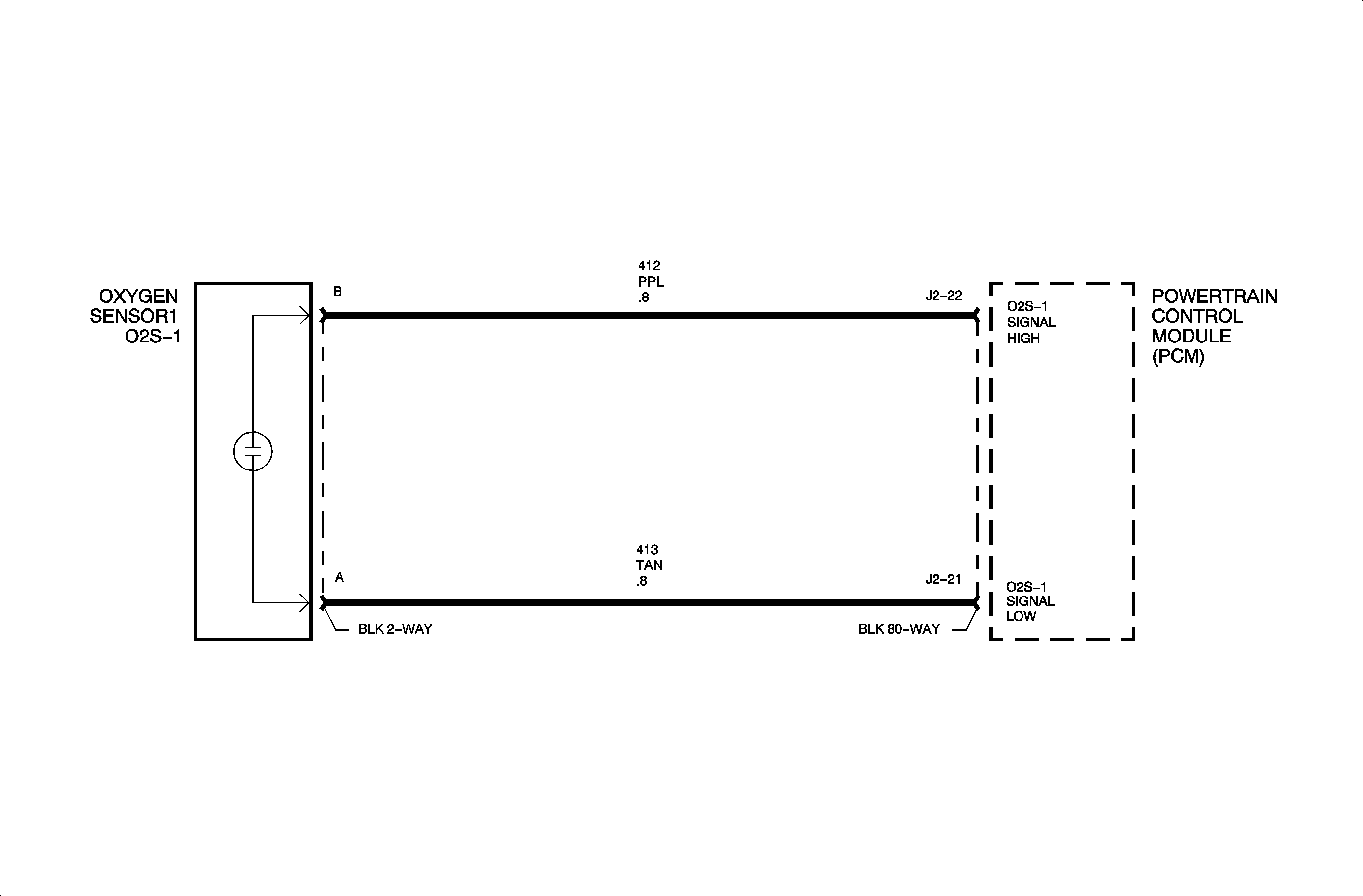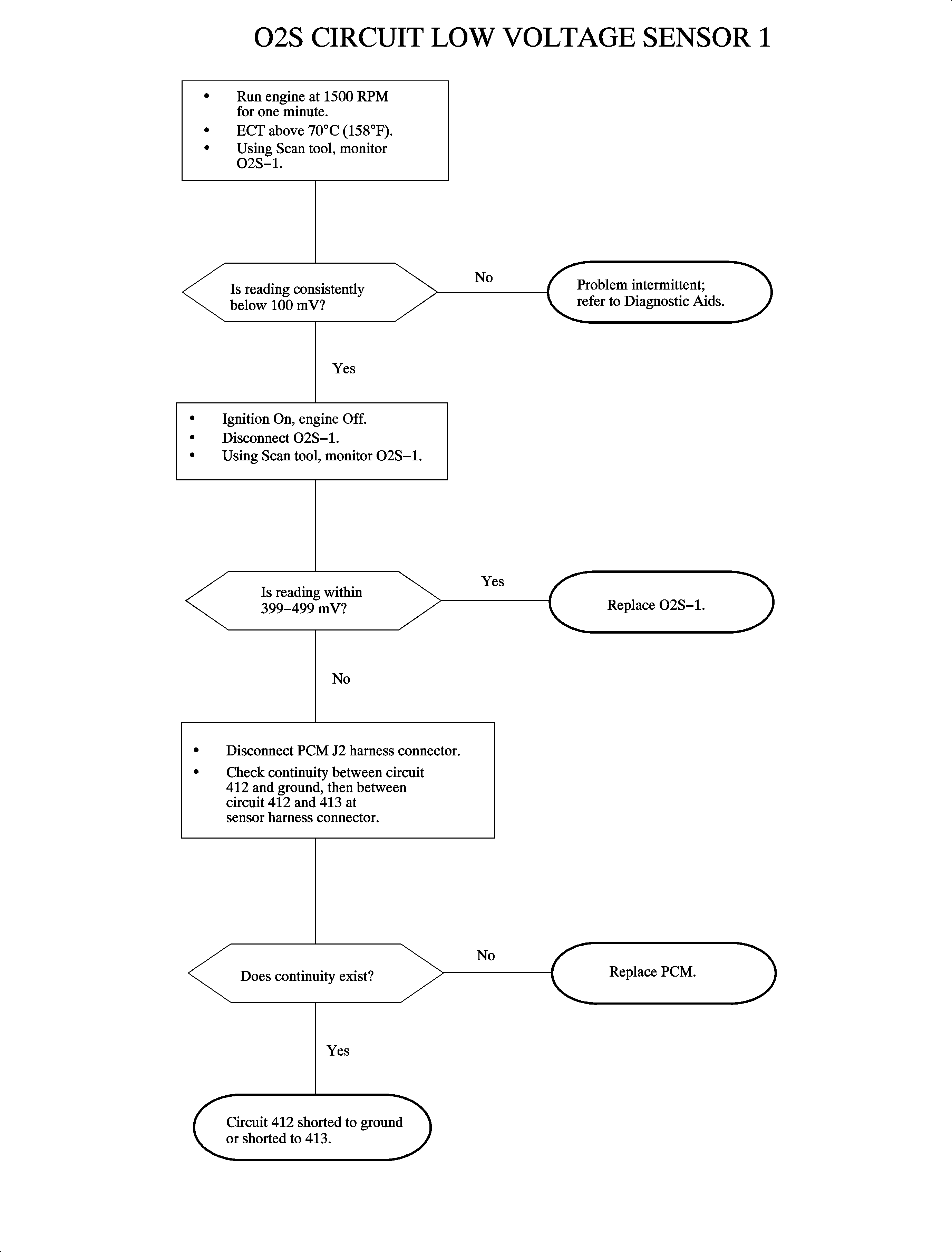
The oxygen sensor 1 (O2S-1) is an electrical source that responds to oxygen content in the exhaust manifold. When the sensor reaches approximately 316°C (600°F), it produces a voltage based on the difference in oxygen between the atmosphere and exhaust gas. The PCM sends a bias voltage (399-499 mV) on the signal line, which is pulled up through high resistance. When the O2S-1 is cold, it produces no voltage and has extremely high internal resistance. The internal resistance of the sensor is much greater than the resistance of the bias pull-up resistor. However, when the sensor heats up, it produces voltage that overrides the bias voltage. This voltage is read by the PCM to determine a rich/lean O2S-1 signal used to adjust injector pulse width. Under normal conditions, low sensor voltage means high oxygen content/lean air-fuel mixture and vice versa. Normal sensor readings will fluctuate between 10-1065 mV. DTC P0131 sets when the O2S-1 signal voltage is too low for a certain length of time.
Conditions for Setting the DTC
DTC P0131 will set if O2S-1 voltage is below 52 mV for 2 minutes and 5 seconds when the following conditions have been met for 14 seconds:
| • | The ECT is greater than 75°C (167°F). |
| • | The calculated airflow is greater than 3 g/s. |
| • | The TP angle is between 8-50 percent. |
| • | No CKP, ECT, EVAP, fuel injector, fuel tank pressure, fuel trim, IAT, idle speed, MAP, misfire, PCM internal fault, or TP sensor DTCs have been set. |
DTC P0131 diagnostic runs continuously once the above conditions have been met.
DTC P0131 is a type B DTC.
Diagnostic Aids
To locate an intermittent problem, use the scan tool to monitor O2S-1 voltage with the ignition ON and the engine OFF. Wiggling the wires while watching for a change from bias voltage (399-499 mV) may locate the area where a short to ground in the wiring could lie.
If the system is commanding rich, the engine is running lean, the O2S-1 signal will be around 100 mV. The short term fuel trim value will be in the 160s as the system is near or at maximum correction.

